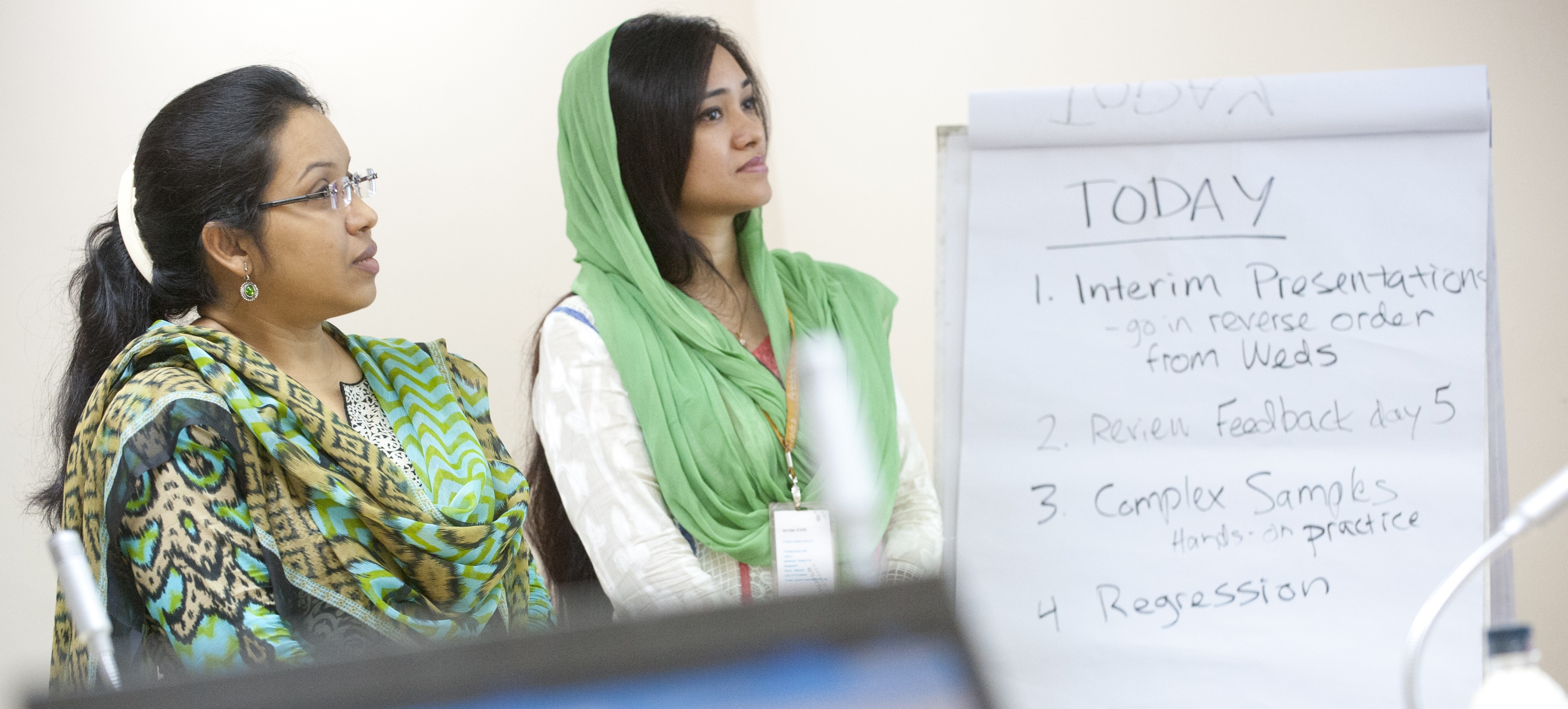Journal Articles
Search our database of 1000's of peer-reviewed journal articles that feature DHS data.
Featured Studies
Featured research topics go beyond a single research paper and often include multiple publications and user-friendly summaries and dissemination materials.
The DHS Fellows Program
Researchers in DHS countries work with DHS analysts to design, analyze, and write a publishable paper.
DHS Analysis Blogs
Read more about our recent research, innovative methods, and success stories.
Research and Further Analysis

The DHS Program's in-house Research and Analysis team conducts rigorous, timely, and innovative mixed-methods research on topics related to global public health, demography, and social epidemiology. Our team also trains, mentors, and closely collaborates with fellow researchers and stakeholders who are driven to utilize DHS Program surveys and other survey data to inform programs and policies in various countries and contexts.
Visit the publications search for a full list of publications. Also, go to the journal articles search for a full list of published journal artilcles that feature The DHS Program data.
DHS Research Reports
Sep 2001
Unmet Need at the End of the CenturyThis report is a review of the extent of unmet need for family planning in 55 developing countries.
Topics: Family Planning, Fertility and Fertility Preferences
Jun 2001
The Contraception-Fertility Link in Sub-Saharan Africa and in Other Developing CountriesThe focus of this analysis is to explain why the correlation between contraceptive prevalence and the fertility rate has been so much lower in sub-Saharan Africa than in other parts of the developing world.
Topics: Family Planning, Fertility and Fertility Preferences
Jun 2001
Female Genital Cutting in Guinea: Qualitative and Quantitative Research StrategiesThis report presents the results of two studies of female genital cutting (FGC) carried out in Guinea in 1998 and 1999.
Topics: Female Genital Cutting, Gender
May 2001
The Substitution of Contraception for Abortion in Kazakhstan in the 1990'sBecause of the heavy reliance on induced abortion in the former Soviet Union in the past century, there is special interest in the growing substitution of contraception for abortion in that part of the world.
Topics: Family Planning, Gender, Maternal Health
May 2001
Gap Between Preferred and Actual Birth Intervals in Sub-Saharan Africa: Implications for Fertility and Child HealthUsing Demographic and Health Surveys (DHS) data from 20 Sub-Saharan countries, this article compares women’s actual lengths of birth intervals to preferred lengths and assesses the implications of the difference for selected demographic and health indicators.
Topics: Fertility and Fertility Preferences
Feb 2001
Contraceptive Practice in Quirino Province, Philippines: Experiences of Side EffectsThis study examined the contraceptive practices and the experiences of women in Quirino province of the Philippines in their use of contraceptives.
Topics: Family Planning, Female Genital Cutting, Gender
Feb 2000
West Africa Spatial Analysis Prototype Exploratory Analysis: Cluster Typing ProceduresThe West African Spatial Analysis Prototype is an attempt to gather existing demographic data collected through the Demographic and Health Surveys of countries in the West Africa region, identify their geographic coordinates, and place them within a geographic database and analysis system.
Topics: Geographic Information
Jan 2000
Contraception-Abortion Connections In ArmeniaIn Armenia, as in other countries in the orbit of the former Soviet Union, induced abortion is an important method of birth control.
Topics: Maternal Health
Dec 1999
Female Genital Cutting and Coming of Age in GuineaThe study of female genital cutting (FGC) in Guinea was conducted mainly to better understand how to ask and answer questions about types of FGC in a DHS survey.
Topics: Female Genital Cutting, Gender
Jun 1999
Breastfeeding and Complementary Infant Feeding/Postpartum EffectsThis report is a descriptive analysis of breastfeeding, complementary infant feeding, and the postpartum effects of breastfeeding and is based on data collected in 37 nationally representative Demographic and Health Surveys.
Topics: Nutrition